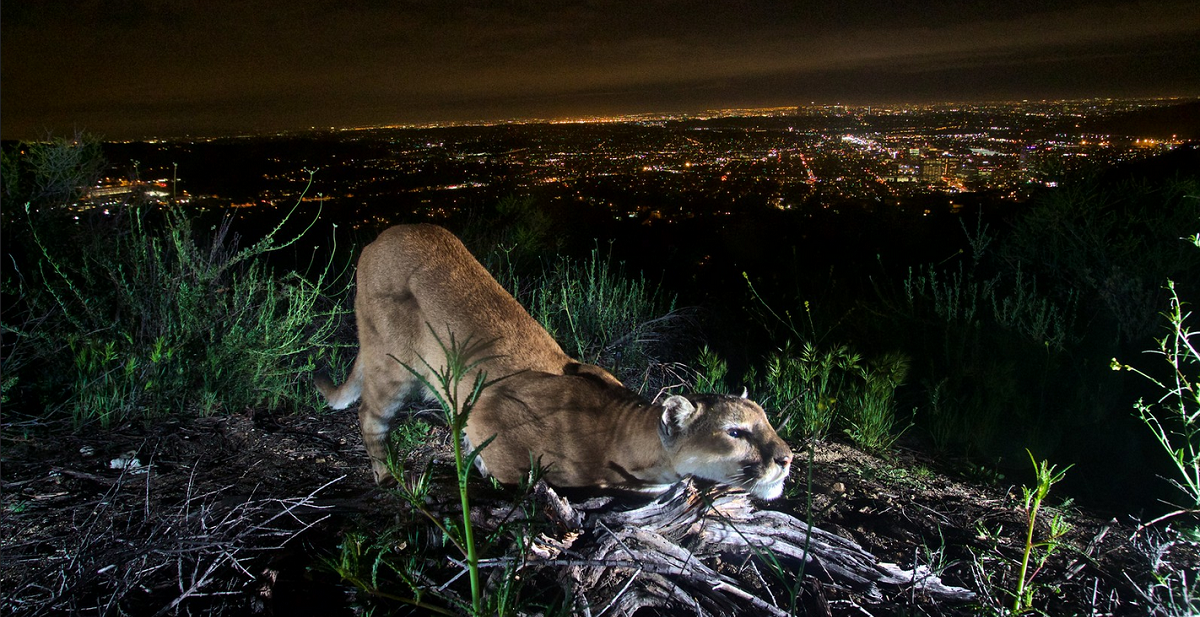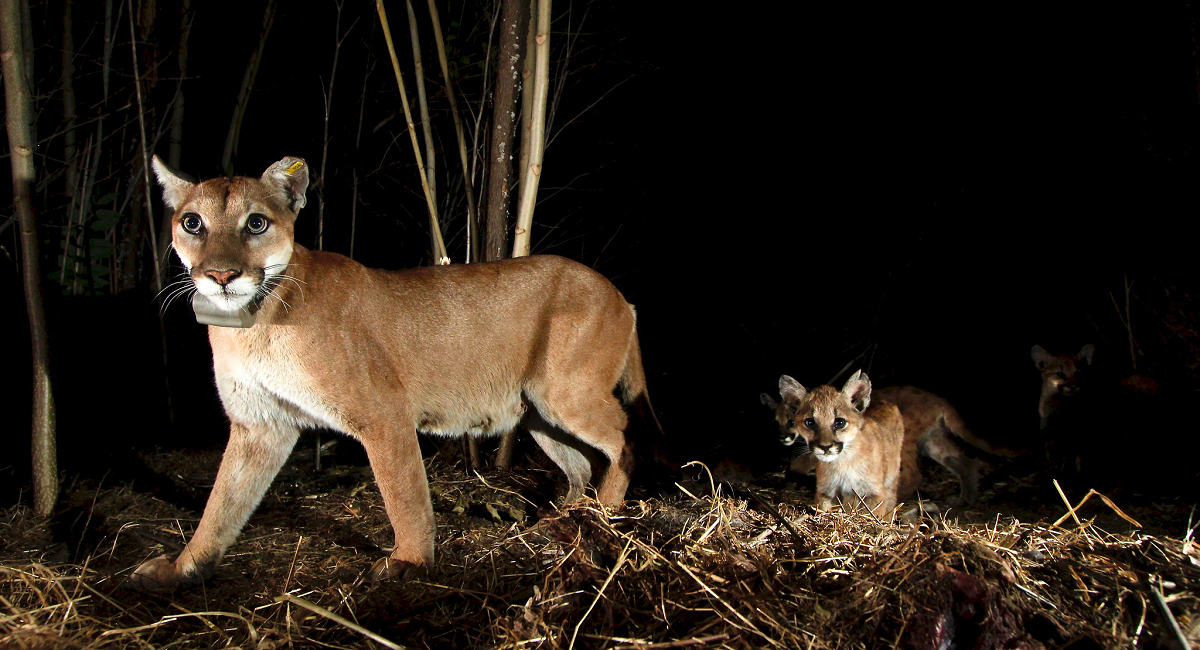Why Mountain Lion Encounters With People Are Increasing
Travis Olander 12.13.23

One year ago, mountain lions killed over half a dozen dogs near a single town in Colorado, in just 30 days. Residents called local law enforcement and pleaded with the Colorado Parks and Wildlife Service to intervene. One family reported two adult cougars seemingly casing their home, stalking their horses and ponies. In May of 2023, in Arizona, a trio of mountain lions were killed after being deemed responsible for another string of pet deaths. In Utah, sights in in urban areas are becoming increasingly common, too.
Across the American Midwest, humans are increasingly encountering large wildcats, raising questions about whether we’re to blame and how we can safely coexist. Mountain lion encounters are nothing new, though. Humans have frequently come upon lions along hiking trails, around campsites and, more recently, along the edges of new urban sprawls butted up against untouched wilderness.
Although usually evasive to humans, mountain lions — often referred to as pumas, panthers, or cougars, depending on the locale — aren’t uncommon creatures. If unconfirmed sightings are be believed, they’re endemic to 49 of America’s 50 states. But it’s in the heart of the Midwest where populations flourish: It’s estimated that between 4,000 and 7,000 lions live in Colorado alone. California, Oregon, and Montana share similar numbers, with tens of thousands more collectively inhabiting a range spanning from New Mexico and Arizona to Washington.
Worryingly, though, are the frequency with which lions are being spotted in developed areas. Sightings in Los Angeles and neighboring urban centers have increased significantly in the last five years, prompting the California Department of Fish & Wildlife to being a robust tracking program, in an effort to plot the cats’ movements.
An adult male lion is fitted with a tracking collar in California to study the cat’s movements. Photo courtesy National Park Service, Santa Monica.
National Park Service scientists have tagged and followed more than a hundred lions since 2002. They hope to better understand the cats’ travel and territorial bounds. With this research, they aim to deconflict encounters with humans by informing the public of where encounters are most likely, and protect the species through habitat preservation. The effort has already produced meaningful insights, with the construction of the Wallis Annenberg Wildlife Crossing across the 101 Freeway — a migratory mountain lion passage aimed at reducing contact along one of the west coast’s largest roadworks — set to open in 2025.
Photo courtesy National Park Service, Santa Monica
For conservationists, the lion crossing can’t open soon enough. Data collected and compiled from the last two decades’ worth of tracking lions paints a clear picture of just how close big cats live to human settlements. Each dot in the map above, presented by the National Park Service in California, represents a different mountain lion. A clear path lions often travel can be drawn from the Rocky Peak Park and East and Rice Canyon areas, down through Bell Canyon, which sits adjacent to major urban zones like Thousand Oaks and the San Fernando Valley, and into the Santa Monica Mountains National Recreation Area and Point Mugu and Topanga State Parks.
Reducing encounters between mountain lions and humans will only become a more pressing matter, biologists say, as the population of American cougars has, in fact, been steadily increasing. That’s partly due to the regulations passed in the 1960s and 1970s, which govern cougar hunts. A decade later, efforts were made to conserve migrating deer and elk populations in the Midwest, which increased the cats’ foot source.
“From the 60s until now, you’ve had a steady progression of conservation benchmarks that have brought us to the distribution of mountain lions in the west,” said Jim Williams, regional director for the Montana Fish, Wildlife and Parks Department.
Humans simply gravitate to the same habitats as mountain lions, too, according to Williams. As people move to the Midwest from the east and west coasts — Colorado and Utah, in particular, have seen explosive population growth in the last five years — they’ve been placed “right smack dab in the middle of mountain lion habitat,” Williams said. “It’s a beautiful place to live, but now you have to live with the mountain lions.”
In the absence of adult males, younger mountain lions encounter humans more often. Photo courtesy National Park Service, Santa Monica
And, as seen during the Covid-19 pandemic, Americans have increasingly engaged in outdoor recreation. In the past fifty years, campgrounds and hiking trails have grown in number, increasing the chances people encounter widllife — mountains lions included.
Hunting mountain lions has also, perhaps counterintuitively, contributed to encounters with people. With limited tags available during restrictive seasons, hunters often pursue prize cats, often large adult males. But for every patriarch lion killed, two or three juveniles or younger lions encroach on the vacated territory. “For every large resident male killed, two or three young guys came to the funeral,” said Dr. Robert Wielgus, former director of the Large Carnivore Conservation Lab at Washington State University. “These young cougars were responsible for increased complaints.”
Because younger cats aren’t as adept at hunting and taking natural prey, they often pursue easier meals — and they also mistake humans and pets as potential food. Its these juvenile lions superseding hunted adults that are often found attacking dogs, cats, and livestock near human settlements. Wielgus also argues that decreased hunting results in decreased immigration of lions, and fewer reports of encounters with people.
“So, basically, what we found was that increased hunting was causing the problems, and decreased hunting solved the problem,” Wielgus said. But too little hunting can also contribute to greater population growth and more encounters. The challenge is finding a balance between these conflicting factors.
But in spite of the data, not all states are considering this approach to mountain lion population management. Utah recently passed H. B. 469, a bill ratified by the state’s legislature to aid conservation efforts of Utah’s wildlife. But just before its passage, legislators amended the bill to allow for year-round mountain lion hunts with no species permit required. Now, any Utah hunter with a hunting license can hunt and trap lions without seasonal restrictions. Conservation groups have sued to kill this amendment, arguing unrestricted hunting could lead to the lions’ disappearance from the state — but not before it affects the cats’ territorial bounds and movements.
Although mountain lion encounters are increasing, most run-ins between people and cats don’t result in any sort of danger. Mountain lions are naturally elusive and tend to avoid humans. Big cats’ aggressive behavior is usually a warning, or a territorial — or parental, with cubs nearby — instinct.
Click the link below to learn about how to stay around mountain lions, and what to do if you see one.
